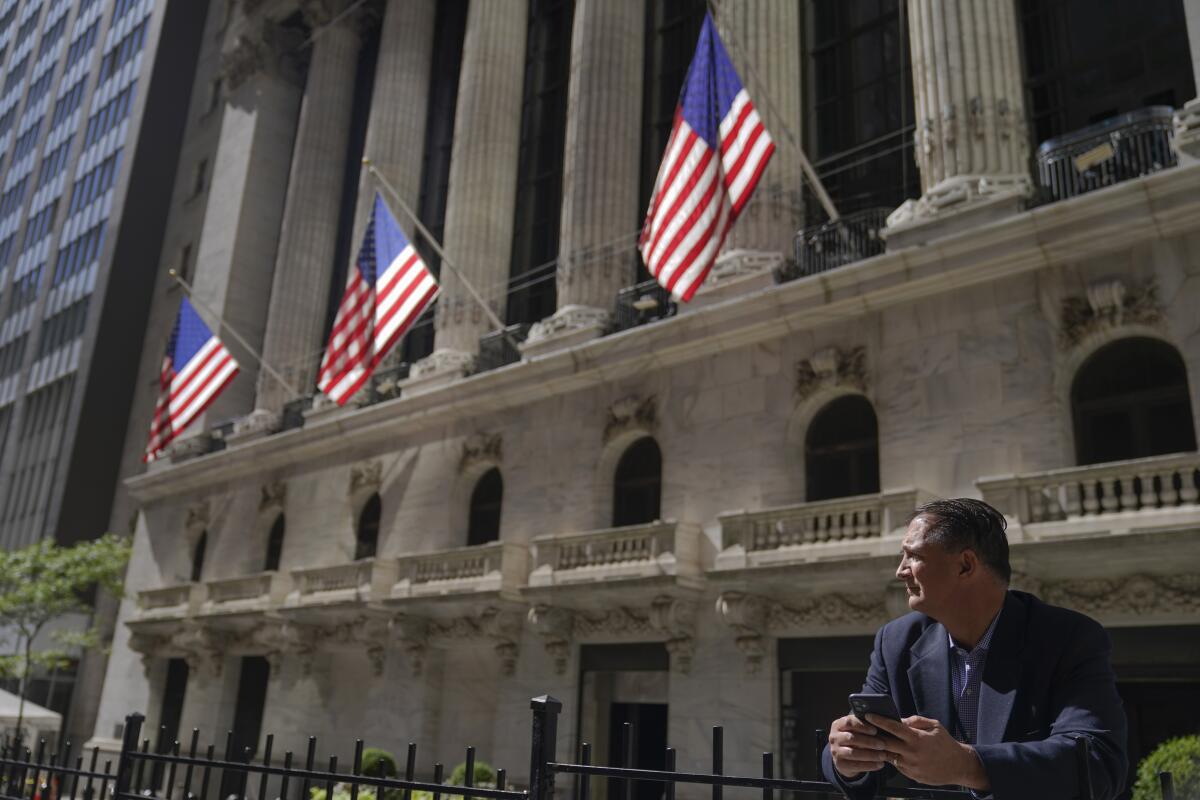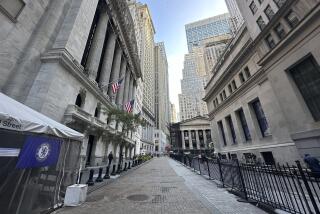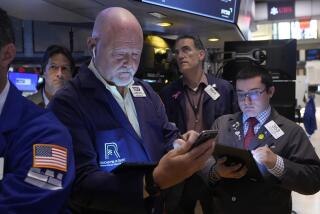Stocks hit summer highs as Fed sees progress on inflation

Wall Street climbed Wednesday to its best level since the summer after the latest hike to interest rates by the Federal Reserve, which said it’s finally seeing improvements in inflation.
The Standard & Poor’s 500 index rallied back from an early 1% loss to rise 1% after Fed Chair Jerome H. Powell said the economy is on the path toward getting inflation lower. The Dow Jones industrial average erased a drop of 500 points to end barely changed, while the Nasdaq composite jumped 2%.
As expected, the Fed raised its benchmark interest rate by 0.25 percentage points to its highest level since late 2007. It’s the smallest such increase in the Fed’s blizzard of rate hikes since March.
What’s more important for markets is where interest rates are heading next.
Much of Wall Street is hoping that cooling inflation since the summertime means the Fed may raise rates just a bit more, before taking a pause and then possibly cutting rates toward the end of the year. Rate cuts can ease pressure on the economy and juice investment prices.
The tech sector’s large-scale layoffs are a tiny blip in today’s strong labor market. But if the Fed’s interest-rate hikes go too far, a new recession could be triggered.
Powell did reiterate Wednesday that “ongoing increases” in interest rates will be needed to bring inflation down to the Fed’s target level. And he said it was still way too early to declare victory over inflation.
But he also said, “We can now say, I think for the first time, that the disinflationary process has started.” That got Wall Street thinking about a future with no more rate increases.
“He had the opportunity to use his voice to tamp down market expectations, and he didn’t do it,” said Katie Nixon, chief investment officer at Northern Trust Wealth Management. “Anyone that had taken a bet that the Fed was going to come out hard on financial positions lost that bet.”
Higher interest rates try to snuff out inflation by slowing the economy and dragging on prices for stocks and other investments. The Fed has already pulled its key overnight rate to its highest level since 2007, at a range of 4.25% to 4.50%, up from virtually zero early last year.
At stake is the economy, which many investors see probably heading down one of two paths: either a relatively short and shallow recession or a much deeper and more painful one. Building hopes for the former helped stocks rally through January to a strong start of the year.
Inflation has slowed sharply, so why is the Federal Reserve still intent on killing jobs and economic growth?
Powell indicated he’s on the more optimistic side.
“My base case is that the economy can return to 2% inflation without a really significant downturn or really big increase in unemployment,” he said.
He also said he did not foresee any rate cuts this year.
Others in the market are not as optimistic. A third pathway for the economy is also possible, said Rich Weiss, senior vice president at American Century Investments: one that happened during the 1970s in which inflation reignited after the Fed let up on interest rates too soon.
“We’re headed into a recession one way or the other, whether the Fed eases up on the brakes or not,” Weiss said. “So you might as well kill inflation while you’re doing it. I think it’s nonsensical to think the Fed is going to magically take their foot off at exactly the right time and slide into a short and shallow downturn and the stock market will come through unscathed.”
One area influencing expectations for the Fed is the job market, which has remained resilient despite all of last year’s rate hikes. Although strength there helps workers, a worry is that it could lead to too-high gains in wages that give inflation more fuel.
Reports on Wednesday gave a mixed picture on hiring. Private payrolls rose by 106,000 in January, according to ADP. That’s a slowdown from a month earlier, and was below economists’ expectations.
But a separate report from the U.S. government indicated more strength. It said the number of job openings increased to 11 million in December, better than expected.
Treasury yields fell as Powell spoke, an indication of expectations for an easier Fed.
The two-year yield, which tends to track expectations for the Fed, fell to 4.11% from 4.21% late Tuesday. The 10-year yield, which helps set rates for mortgages and other important loans, fell to 3.42% from 3.51% late Tuesday.
A lackluster earnings reporting season also continues on Wall Street, with more mixed profit reports arriving from big U.S. companies.
Electronic Arts tumbled 9.3% after it gave forecasts for upcoming results that fell short of Wall Street’s expectations.
On the winning side was Advanced Micro Devices, which rose 12.6% even though its profit tumbled 98% in the fourth quarter from a year earlier. Its results were better than analysts expected.
All told, the S&P 500 rose 42.61 to 4,119.21, its highest close since August. The Dow gained 6.92 points, or less than 0.1%, to 34,092.96, and the Nasdaq jumped 231.77 points to 11,816.32.
AP Business Writers Joe McDonald and Matt Ott contributed to this report.
More to Read
Inside the business of entertainment
The Wide Shot brings you news, analysis and insights on everything from streaming wars to production — and what it all means for the future.
You may occasionally receive promotional content from the Los Angeles Times.












